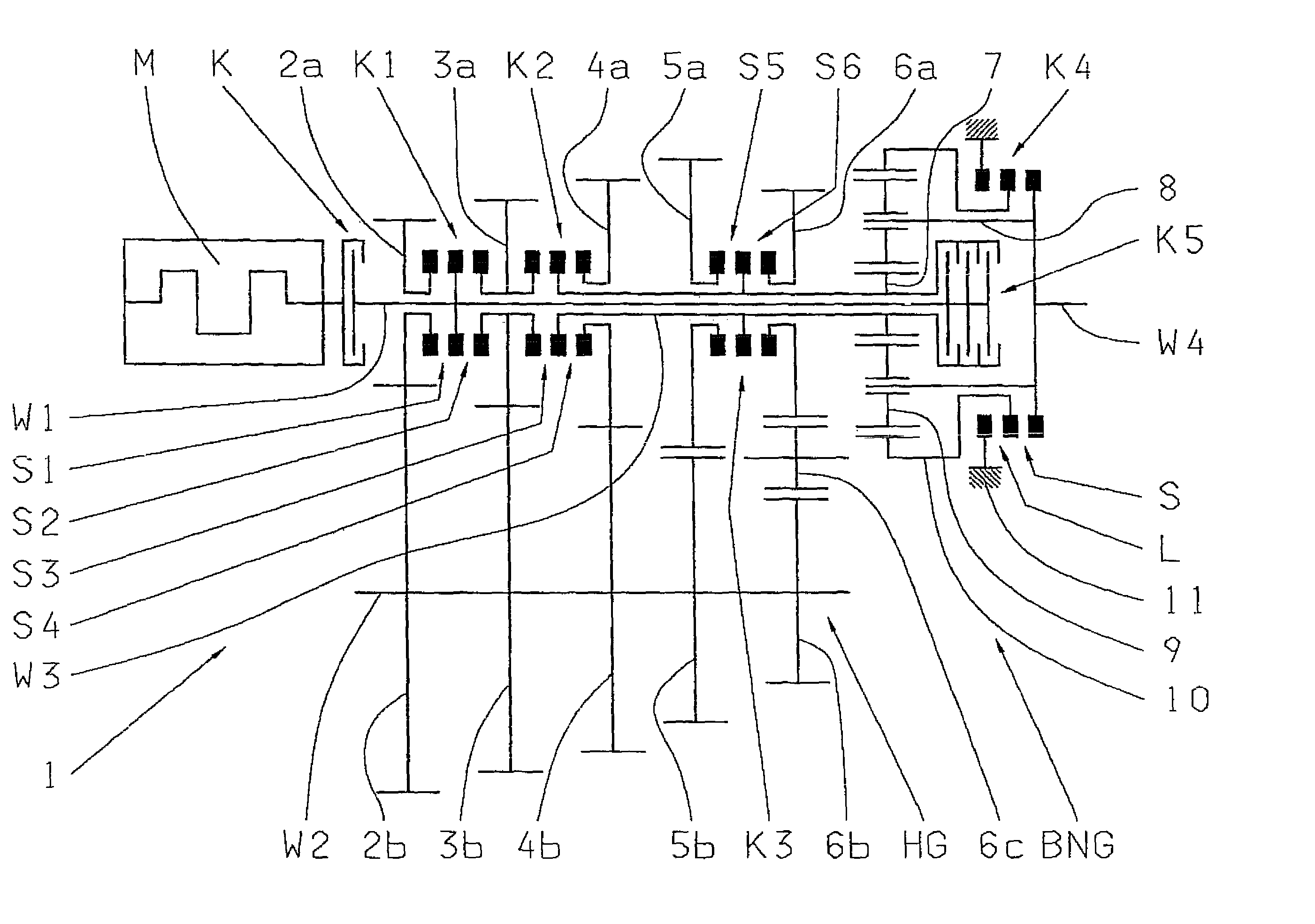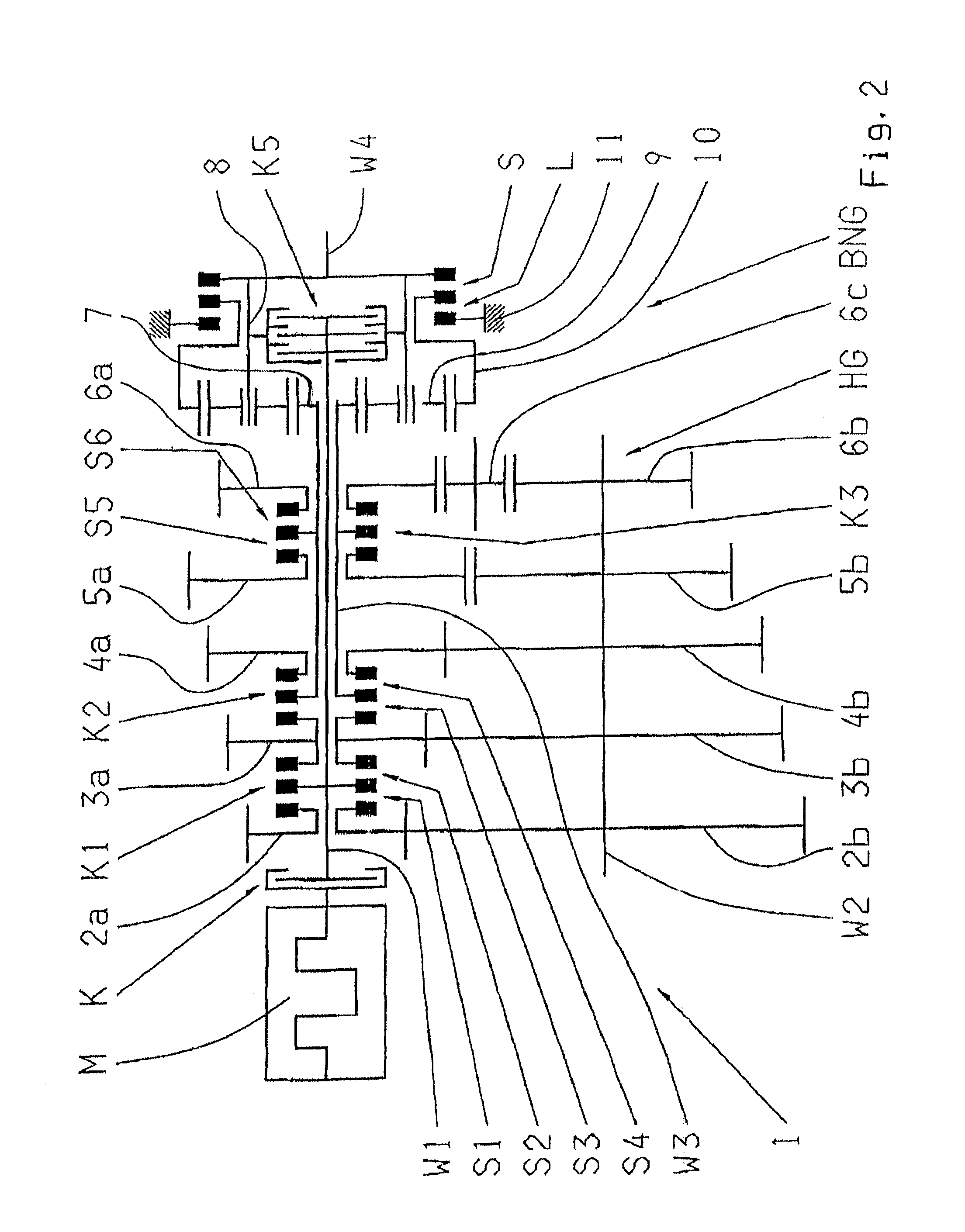Motor vehicle automated gearbox and method for the operation thereof
a technology for motor vehicles and gearboxes, applied in gearing control, mechanical equipment, gearing, etc., can solve the problems of unfavorable automatic gearbox operation, so as to reduce the load on the automatic gearbox, compactly dimension, and increase the load on the drive motor.
- Summary
- Abstract
- Description
- Claims
- Application Information
AI Technical Summary
Benefits of technology
Problems solved by technology
Method used
Image
Examples
Embodiment Construction
[0024]An automated gearbox 1, according to FIG. 1, is formed as a range-change gearbox with a main gearbox HG and a range group BNG connected downstream therefrom. The main gearbox HB, which has four forward gears and one reverse gear, is provided with an input shaft W1, a countershaft W2 arranged parallel thereto, and an output shaft W3 arranged co-linearly or co-axially to the input shaft W1. In this case, the output shaft W3 is made as a hollow shaft and the input shaft W1 extends centrally inside the output shaft W3 as far as the output side end of the output shaft W3 and the main gearbox HG.
[0025]On the input side, the input shaft W1 of the main gearbox is connected to a drive motor M, made as a combustion engine, by an engine clutch K that can be engaged and disengaged. Inside the gearbox, the input shaft W1 can be coupled in a shift position S1, via a first shift clutch K1, to a loose gear wheel 2a of a first gear wheel pair 2a, 2b where, owing to the fixed connection of the ...
PUM
 Login to View More
Login to View More Abstract
Description
Claims
Application Information
 Login to View More
Login to View More - R&D
- Intellectual Property
- Life Sciences
- Materials
- Tech Scout
- Unparalleled Data Quality
- Higher Quality Content
- 60% Fewer Hallucinations
Browse by: Latest US Patents, China's latest patents, Technical Efficacy Thesaurus, Application Domain, Technology Topic, Popular Technical Reports.
© 2025 PatSnap. All rights reserved.Legal|Privacy policy|Modern Slavery Act Transparency Statement|Sitemap|About US| Contact US: help@patsnap.com



